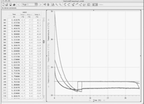Science tech tools
By Mary Bigelow
Posted on 2011-06-18
 I teach seventh grade science and am currently putting together my wish list for next year. I’m looking for information on data collection devices such as Vernier, RED (Really Easy Data) or Log It. In particular, I would like to use the devices for labs on motion, force, pressure, and temperature. I have not worked with probeware before so I want to start small. I have considered just purchasing one kit to get myself acquainted and then perhaps applying for a grant eventually.
I teach seventh grade science and am currently putting together my wish list for next year. I’m looking for information on data collection devices such as Vernier, RED (Really Easy Data) or Log It. In particular, I would like to use the devices for labs on motion, force, pressure, and temperature. I have not worked with probeware before so I want to start small. I have considered just purchasing one kit to get myself acquainted and then perhaps applying for a grant eventually.
—Rana, Avenel, New Jersey
It’s really exciting to see how these tools can engage students. But, as you suggest, it’s important to select the right equipment for your situation. I’ll share some input from those who have experience with these tools.
From Martin Horjesi, author of NSTA’s Science 2.0 blog:
Suggesting a particular product is a little tough since it is hard to compare much besides specs. My life with tech has taught me that it is not what tech you have, but what you do with what you have.
The three brands of probeware mentioned are just three of maybe five to seven options. Since these kids are in seventh grade, I assume they will catch on quickly to the potential of real-time data collection and hit some limits of the RED system without jumping through additional financial and device gymnastics.
Personally, I think the Vernier Go sensors with LoggerLite are a great introduction that can do much more than the basics. They are also work with LoggerPro, a powerful application that could run a small country. Additionally, the Go stuff is similar or below the cost of the RED system. But again, it is not just the tech, but what you do with the tech. There is an old adage in photography that the amateur has the best equipment, but the professional has the best pictures. I have seen classrooms filled with powerful tech tools, yet little more than the mundane was practiced. I’ve also visited other rooms where the teacher has pushed the limited tech beyond the normal and into the realms of creativity, innovation, and constructivist exploration.
A needs assessment would be a great place to start. How many students? What subjects? What are your goals and objectives? How much will they be used? Are there any existing sensors/software in the school/district? Will they be used as standalone, with laptops, desktops, iPads/iPods? How much training time is available? How many individual sets are needed? Will this be part of a larger integration plan? And so on.
From Tom Jenkins, via the Middle School Portal:
We use Vernier Labquests in our building. The flexibility that they offered sold us. That being said…They were more expensive as compared to some of the others, so we had to buy fewer units. Had them for three years and have used motion, pH, and temperature sensors with my fifth through eighth graders. I’m glad that we bought them. As far as the competitors, I can’t offer a practical comparison. Hopefully others will chime in….
I’m also hoping others will indeed “chime in” with comments on how they decided on a type of probeware and suggestions for using probes in middle school science.
I’ve worked with teachers and technology for quite a few years. I’ve heard many teachers say that they won’t “let” students use a technology tool until and unless they themselves have mastered it. So projects that start small often stay small (or disappear) as the technology changes rapidly and the teachers struggle just to keep up.
I’d suggest jumping right in and learning along with the students. After all, these are the same students who have mastered cell phones, MP3 players, and the intricacies of video and computer games. Figuring out how to use a probe shouldn’t be too much of a challenge for them.
You could start with an activity you’re already comfortable with, substituting the probes for traditional measurement devices and techniques. Or if you have a few inquisitive students, you could ask them to figure out a probe and then teach the rest of the class. When I used this strategy, I asked the “instructors” to create a one-page handout with step-by-step directions to share with the other students. Their directions were more student-friendly than the original manuals (or my directions).
With these probes, students will have authentic experiences in measurement and data collection. The probes will not provide “answers.” Students will still have to learn how to analyze the data and draw their conclusions—that’s where your role as teacher is important.
Additional resources:
Probeware Tools for Science Investigations
Science 2.0: Probeware—Illuminating the Invisible
Disclaimer: The views expressed in this blog post are those of the author(s) and do not necessarily reflect the official position of the National Science Teaching Association (NSTA).


